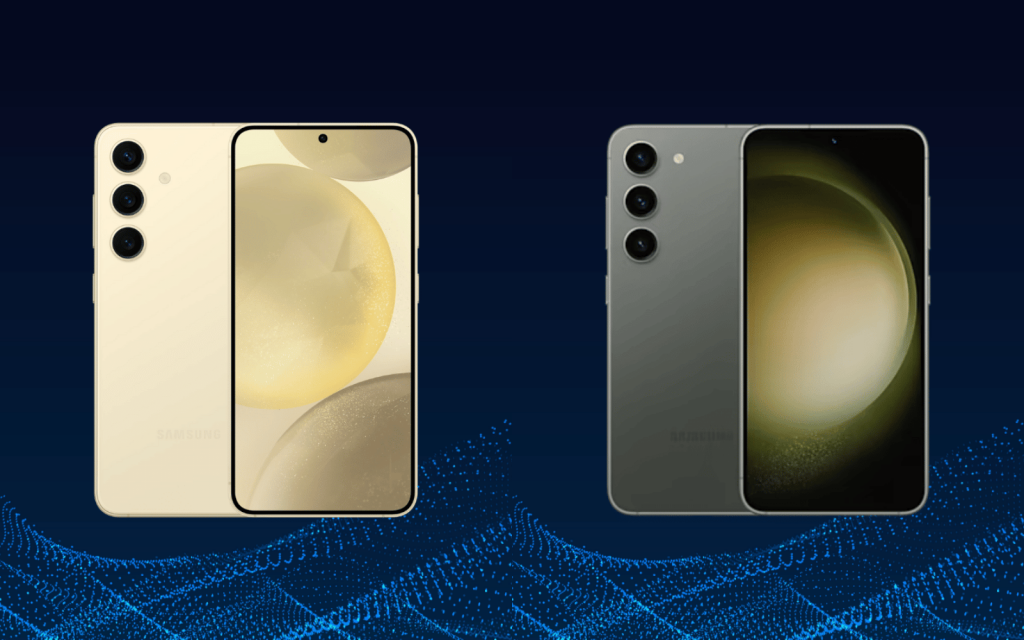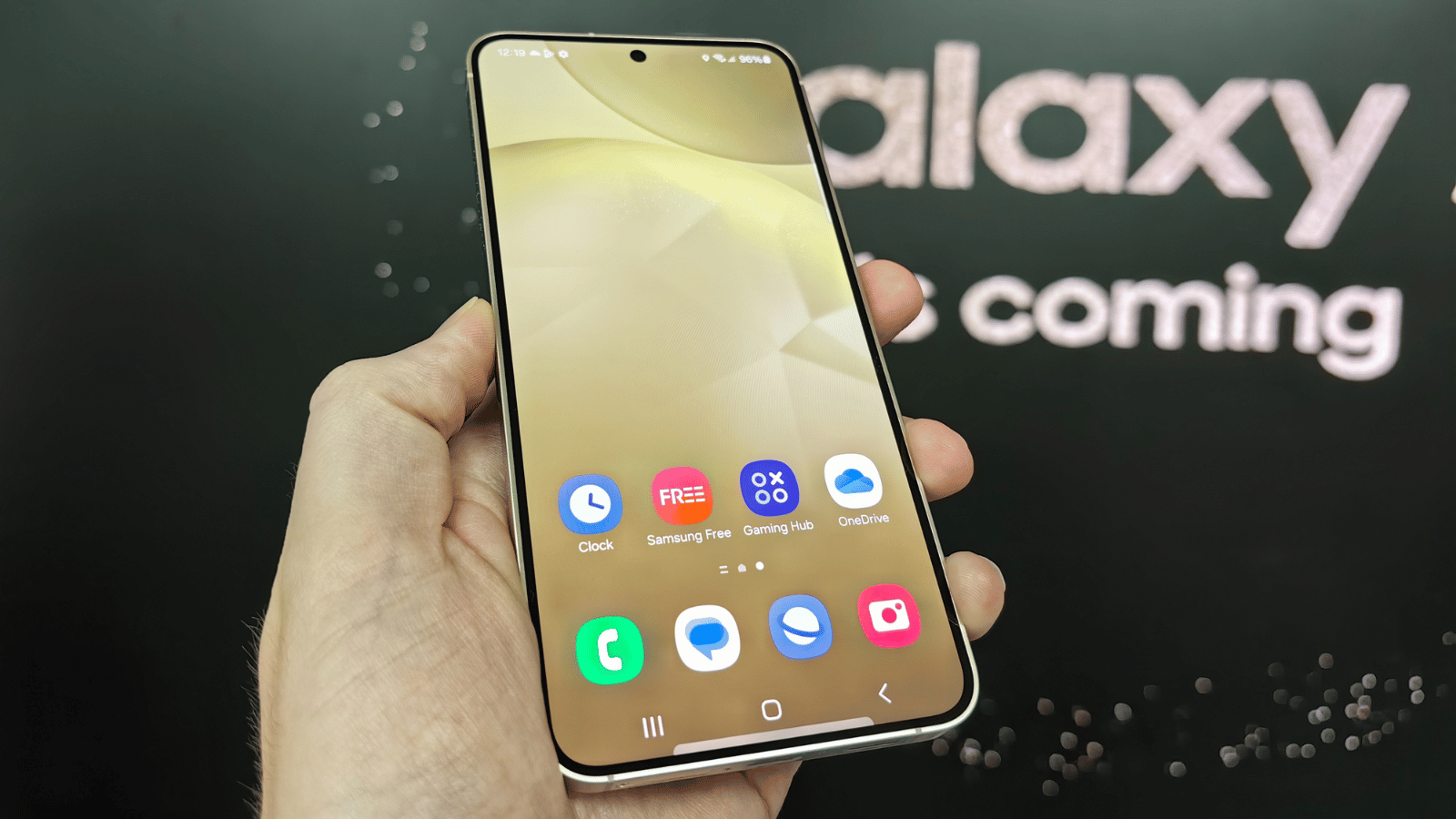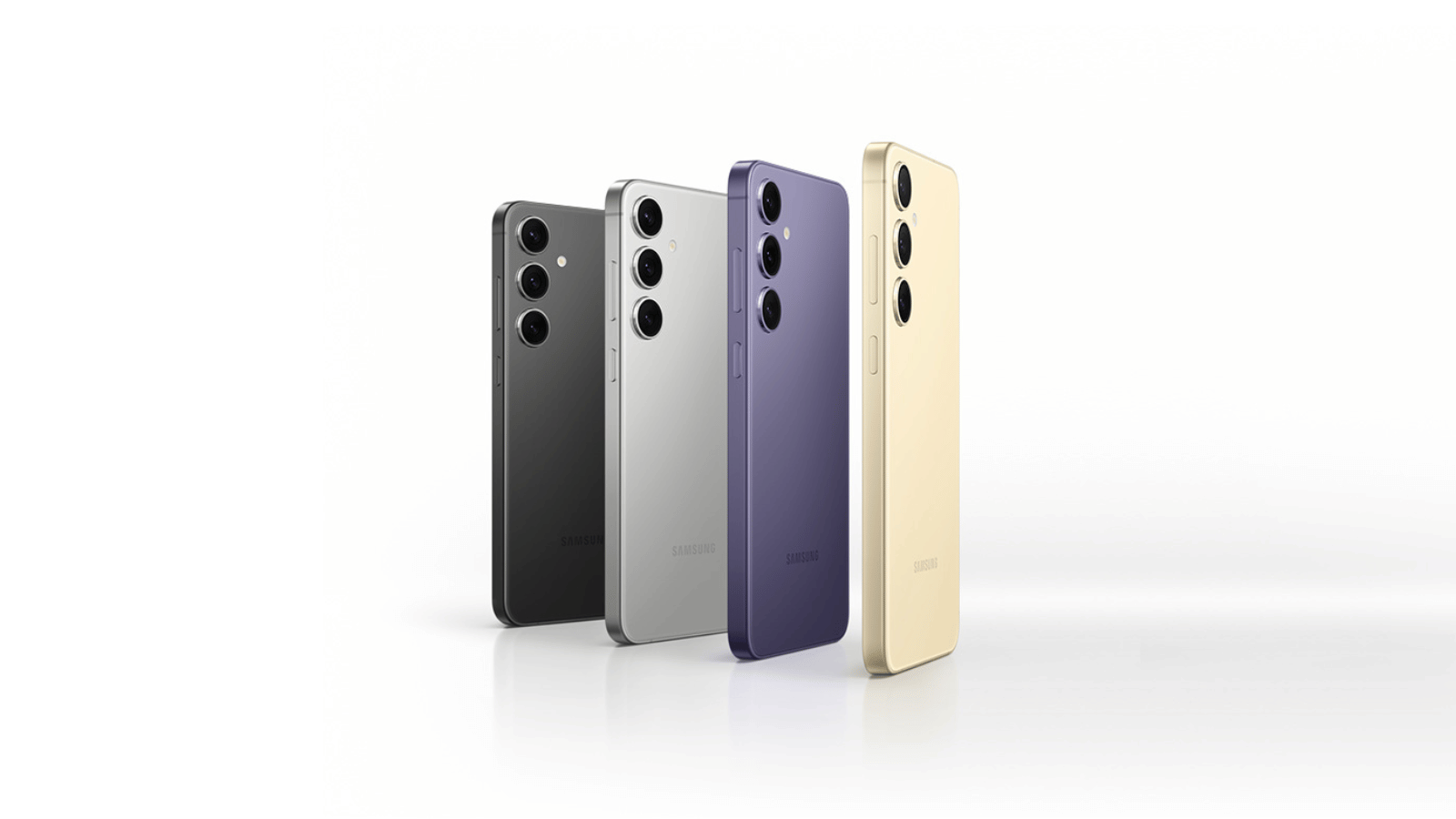Now that the question has done another lap around the Sun, it’s time for it to be asked once again: is it worth sticking with last year’s Galaxy S23 or biting the bullet and getting Samsung’s AI-touting S24? It’s not a decision you can make lightly, especially when the difference could mean the difference between affording rent for the month or playing Marvel Snap without all the lag.
If someone’s already footing that bill, then you might feel you deserve the upgrade. And you won’t be disappointed. The S24 is the better device on paper, but in terms of being strapped for cash, sticking with (or upgrading to) Samsung’s 2023 efforts might be more up your alley. We’re not here to tell you how to spend your money, though. Our job is to list the differences, somewhat snarkily, and let you do the rest.
Let’s hop to it, shall we?
What? No makeup?
It shouldn’t come as a surprise to hear that the S24 is nearly identical to the S23. It’s been standard practice for years now, not just in Samsung’s design room, but in the smartphone industry as a whole. The South Korean conglomerate isn’t in the business of reinventing the wheel. It’s in the business of convincing people to buy that wheel over and over again.
There’s a chance we’re being too harsh on this particular conglomerate, but it doesn’t make our “nearly identical” statement any less true. Samsung’s holding onto that glass-and-aluminium chassis for dear life but has at least managed to scale back those bezels ever so slightly, allowing them to squeeze in an extra 0.1in of screen. This trumps the S23’s 6.1in display. But only just. Oh, and lest we forget the change to a matte finish from the glossy skin it favoured previously.
The screen might be larger, but it won’t be any clearer. That’s fine by us — the S23’s 120Hz FHD+ Dynamic AMOLED 2X displays did a fine job. It will be a fair bit brighter, though. Samsung put some real elbow grease in to get the S23’s 1,750 nits peak brightness up to a stellar 2,600 nits for the S24, and it hasn’t gone unnoticed.
In keeping with the trend for much of the S24, it’s retained the IP68 rating and Gorilla Glass Victus 2 screen. There’s no denying that the massive brightness boost and marginally larger screen are nice, but calling them must-haves would be taking things a smidge too far. Maybe next year, huh?
Winner: Galaxy S23
It’s not all about looks (thank goodness)
The S24 has, at the very least, shipped with some new hardware. While the Americans, Chinese, and Canadians all get to frolic about with Qualcomm’s Snapdragon 8 Gen 3 chipset across the S24 line-up, the rest of the world is left with the Exynos 2400 in the base S24 and +. Sure, the 8 Gen 3 outperforms the Exynos variants in almost every way, but it’s a tighter race than you might think.
Don’t let Exynos’ inclusion in South Africa’s variants get you down just yet. It’s still technically more powerful than last year’s Snapdragon 8 Gen 2, but those differences are minor and only going to be noticed by game-heavy or power-centric users If all you’re doing is booting up Clash of Clans or making the odd phone call, the S23 (or older) is more than enough power to be getting on with. For a good couple of years, too.
There’s 8GB of the same LPDDR5X RAM that we saw in the S23, with two storage options available: 128GB and 256GB. By far the most impressive change is the S24’s seven years of OS and security updates, immediately trumping Samsung’s previous rule of four — making any S24 that much more futureproof.
Had it been any other year, we might’ve ended things there. Not this year. Samsung’s taking a big swing in what it calls ‘Galaxy AI’ which is exactly what it sounds like — AI embedded right into its phone’s mainstay apps. Until we’ve spent some long-term bonding time with the S24 we can’t exactly make a call, but if Samsung’s claims are a judge of character, they’re something to behold.
Winner: Galaxy S24
Only one 100mAh leg to stand on
Forgive us, but what year are we in? 2024? We didn’t just dream that? Can somebody please explain then, why Samsung is still stuck in the 1930s and refuses to give their customers a battery larger than 4,000mAh? And we haven’t even gotten to the worst bit — it’s somehow an improvement over the S23’s 3,900mAh battery. A small, really minuscule one, but an improvement.
Fortunately, the Exynos 2400 does a good job of defending the phone’s honour. It’ll likely see you through a whole day without many issues, but if you’re taking full advantage of that brighter-than-necessary display, it might cancel out all of the chip’s hard work.
If overachieving battery life is a must, you’re better off spending the extra couple of grand on this year’s Ultra model, which touts a 5,000mAh battery. Or, you know, you could spend a whole lot less and look into something coming out of Huawei, Honor, Oppo, or Xiaomi where that 5,000mAh isn’t anything to brag about.
You might think a minimal upgrade in the life expectancy might warrant some faster charging. We’d invite you to think again. The included 25W charging will serve just fine, but then again, it served just as well on the base S23. We’d be a little more forgiving if Samsung had the bottle to throw in Qi2 charging, but, as is par for the course, it’s stuck with the same 15W wireless charging standard that was present in the Galaxy S10. No, we’re not kidding.
From a purely technical standpoint, we’ve got to hand it to the S24 here. We’re not robots, though, and aren’t purely technical. From a value angle, the S23 wipes the floor with the S24.
Winner: Galaxy S23
Same camera, different year
The S24 has at least done us the service of adding something new into the mix for the categories we’ve pitted it in. Its display is marginally larger and brighter, there’s a new chipset and AI skills to fool around with, and it might survive a couple of minutes more in your pocket. The camera module, on the other hand, hasn’t been so lucky. Just like the S23 that came before it, the S24 is toting much of the same tech that was already showing its age when it turned up inside the S22.
That means identical 50MP main, 10MP telephoto, and 12MP ultrawide sensors taking up residence in the S24’s rear, all of which were present in the S22. Flip it round and you’ll encounter some slightly newer tech — but only just — in the form of a 12MP sensor and the same HDR10+ recording that Samsung had down in last year’s iteration.
How it’s managed to pull off yet another copy-and-paste job is beyond us. For one, it helps that the general population keeps on buying these new devices without much thought or protest. And two, Samsung is doing its best to convince everyone that the upgrades the camera will see — which largely include improved image processing thanks to GaalxyAI — will be enough to sell the phone’s cameras. And they’re probably right.
That’s not to say that’s a bad thing. The S23’s camera was, and is still, an excellent array packing more than enough power and skills than the average Joe knows what to do with. In the short time we spent with the S24 line-up, the camera only impressed us as far as the hardware was concerned, with Galaxy AI’s additions not doing enough to convince us it’s worth the R21,000 price tag. Who knows? Prolonged time spent in the S24’s company might convince us otherwise, but first impressions didn’t leave us impressed.
Winner: Galaxy S23
Samsung Galaxy S24 vs. S23 – Initial verdict
Look, long story short, the S24 is the better of the two. But it’s a far closer fight than you might think. The S24 mimics its older siblings in looks at every turn, only breaking the pattern when it comes to the slightly larger and brighter display that’s accompanied by the ever-so-small change from a glossy to a matte finish.
For us, the S24’s triumphs; Galaxy AI, more raw power, and hardly better battery just aren’t enough to convince us to part with the necessary R22,500, nor advise you to do the same. Unless you’re desperate to get your hands on one of the first AI smartphones or just want something that’ll last a couple extra minutes per day, that is. Otherwise, the S23 will suit you just fine — and costs a good few grand less.







